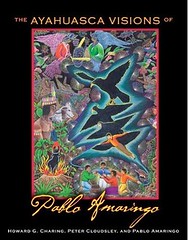History of Salvia Divinorum
IN THE BEGINNING:
In the autumn of 1962, in the rural hills of Oaxaca, Mexico, AlbertHofmann, the discoverer of the entheogenic effects of lysergic acid diethylamide (LSD), and R. Gordon Wasson, the father of ethnomycology, traveled by mule in search of one of the flowery dreams of this subtropical landscape. The object of their expedition was a specimen of the Mint Family (Lamiaceae/Labiatae) used for centuries by Mazatec curanderas (shamans) to summon healing visions. From the plants collected by Hofmann and Wasson, Linnaean taxonomists deemed this species theretofore unidentified and christened this plant-teacher SALVIA DIVINORUM, the Sage of the Diviners (or simply “the Divine Sage”). To the Mazatec, it was known as Ska Maria Pastora, the Leaves of the Virgin Shepherdess.
SALVIA IN DETAIL:
Salvia leaves contain Salvinorin A, a molecule composed of carbon, oxygen and hydrogen. When smoked, this compound is active in doses of 200 to 500 micrograms (that’s 200 to 500 millionths of a gram!), making it the most potent naturally occurring hallucinogen known, comparable to LSD in strength. The active hallucinogenic ingredients are unique, and so SALVIA DIVINORUM is NOT an analog of or very similar to any other drug.
EFFECTS:
If vaporized and inhaled, full effects are felt in thirty seconds without a transition period into the experience. The most intense effects last five to ten minutes and then gradually lessen over the next twenty to thirty minutes. The experience can include a sense of metamorphosing into inanimate objects, seeing two dimensional geometric patterns, remembrance of things past, loss of physical and mental identity, sensations of extraordinary
